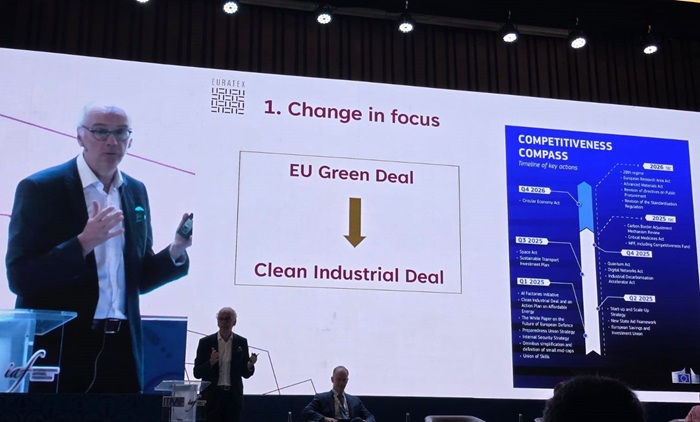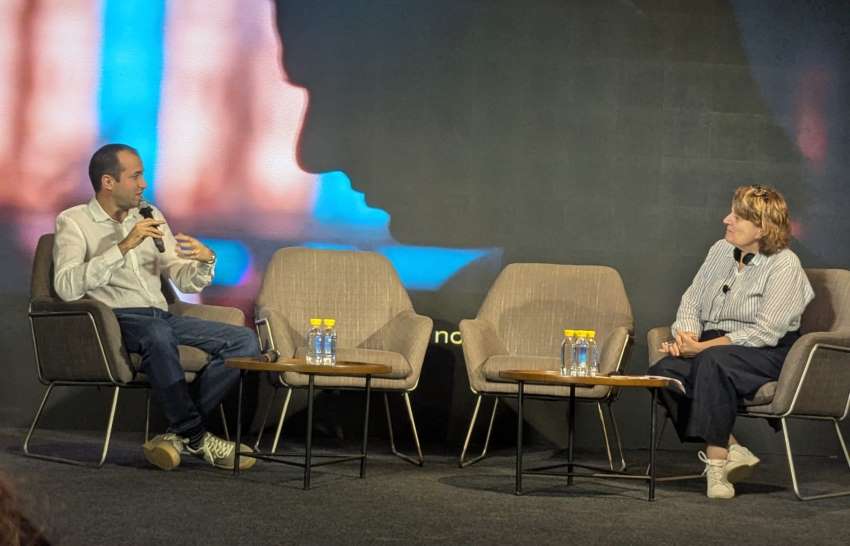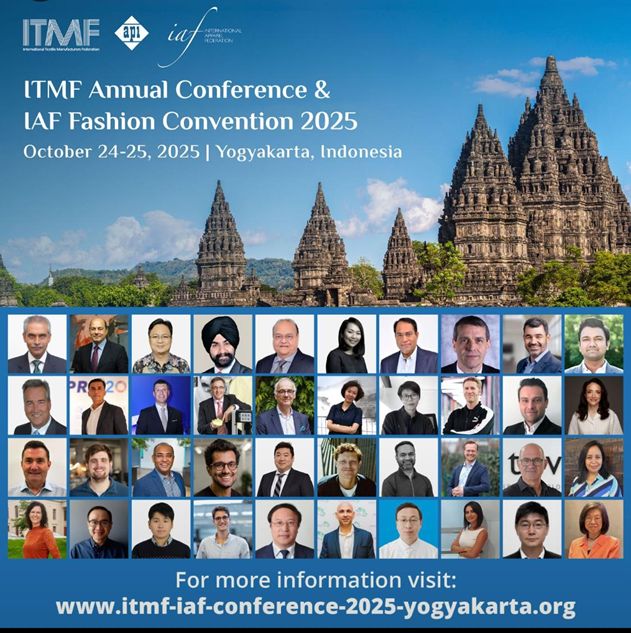FW
The slide in man-made fiber prices might soon come to an end. Global synthetic fiber prices fell by 12.3 per cent in May compared to the same month last year.
Firmer crude oil prices have helped to offset the downward pressure inflicted by cost-conscious apparel makers. After rising 30 per cent between mid-March and early May, oil prices have been moving within a very narrow band and remaining 30 per cent lower than a year ago.
In Asia, the world’s largest fiber-producing region, synthetic fiber prices fell by only 6.6 per cent, a much smaller decline than April’s almost 12 per cent drop. In China, staple prices have firmed, while those of polyester have declined due to a recent drop in intermediates prices and sluggish demand for the fiber due to seasonality. However, polyester is beginning to replace cotton in many fabrications due to its lower cost, so demand for the synthetic fiber is getting stronger.
Asian synthetic fiber prices are more than 17 per cent below the world average. The European synthetic fiber price index fell by 24 per cent compared to May 2014. European synthetic prices ended the month at more than 10 per cent above the world average.
Lower imports and production and marginally higher consumption of cotton in China are expected to reduce China’s stocks-to-use ratio in 2015/16. China’s stocks-to-use ratio in 2015/16 is expected to slip to around 170 per cent, down from 190 per cent in 2014/15.
Although these are record high stock levels, China’s stock accumulation policy is not entirely unprecedented. Similar rapid stock run-ups occurred from 1982/83 to 1984/85 as well as from 1993/94 until 1998/99.
In previous cases, high stocks-to-use have usually been reduced by approximately 20 percentage points per year, similar to current 2015/16 forecasts for China.
Slightly lower 2015/16 stocks-to-use ratios are forecast for most major markets outside of China, both importers and exporters.
India’s stocks-to-use are forecast to decline from 48 to 43 per cent, while most other large markets are expected to see declines under five percentage points.
Bangladesh’s and southeast Asia’s stocks-to-use, on the other hand, are projected to remain roughly even or rise slightly.
The US season average farm price is projected at 60 cents a pound, with the mid-point slightly lower than the current season estimate.
For 2014/15, world production and ending stocks also have been reduced, while world trade has been raised on somewhat higher expected Chinese imports and use has been hiked slightly.
Australian wool prices are forecast to increase in 2015-16, supported by increased processor demand, a lower Australian dollar and falling production.In 2015–16 Australian shorn wool production is forecast to fall by three per cent, the lowest in more than six decades.
The increase in export demand partly reflects firmer consumer demand for clothing in the United States and some countries in the European Union, together with a refill of wool inventories in major garment manufacturing centers. These factors drove stronger wool buying in the first half of 2015, with most major wool producing countries recording increased export volumes and higher prices.
Demand from China has been particularly strong. In the four months to April 2015, the volume of Australian raw wool exports to China lifted seven per cent and their value rose 16 per cent. Exports also increased by 16 per cent to the Czech Republic, by 40 per cent to Malaysia and to the Republic of Korea.
In 2015–16 demand for wool from major processing countries is expected to remain relatively firm, reflecting improving demand for woolen apparel in some major world markets such as in the United States and parts of the European Union.
Australian wool exports are estimated to remain relatively flat 2014–15, reflecting static shorn wool production.
Cotton sown in the 2014-15 growing season was down by 46 per cent in comparison to the previous growing season due to dry seasonal conditions in the lead-up to planting and reduced availability of water for irrigation. However, production is on the rebound. Australia has the highest yield in the world and this year it is up 10 per cent on record. More than 2.2 million bales are expected to be harvested nationally this year.
Production of cotton in Australia has a reputation of being free from child labor and abuse of pesticides.
Despite the dry start to the Australian growing season, consistent temperatures and good grower management led to the record yields.
To Australia's advantage, lower cotton production is forecast in all major producing countries such as China, India, Brazil and the US, with forecasts predicting a 5 to 14 per cent decline. Although world cotton prices are forecast to fall this season, irrigated cotton is still expected to remain the most profitable irrigated crop in 2015-16. Improved production is expected to encourage growers to plant cotton if sufficient irrigation water is available.
Cotton is the world's number one natural fiber with a market share of 30 per cent of the world fiber market.
The American Apparel and Footwear Association (AAFA) has released the 16th edition of the Restricted Substance List (RSL). This is an industry resource for banned or restricted chemicals and substances used in finished home textiles, apparel and footwear products globally.
The latest RSL contains 12 chemical categories with over 250 chemicals and has been updated to follow recent additions or changes made to regulations and laws, including those released in China and Turkey that restrict or ban certain chemicals in the textile, apparel and footwear industries.
AAFA created the RSL over eight years ago in response to the rowing need to keep track of international and national regulations restricting use of certain chemicals in products. AAFA offers the industry the intelligence needed to manage a responsible, compliant supply chain on a regular, on-going basis.
With the release of the previous edition in December, AAFA launched a mobile app designed to help users navigate the hundreds of chemicals featured on the list. Users can filter, search and sort by categories including chemical name, CAS number, country and regulation. The Voluntary Product Environmental Profile, another offering in addition to the RSL, is an online tool that lets apparel and footwear companies exchange environmental and chemical management information with their supply chain partners.
The autumn edition of apparel fabrics and accessories fair – Intertextile Shanghai Apparel Fabrics – is setting the stage at the new and larger National Exhibition and Convention Center in Shanghai, to welcome around 4,000 exhibitors from October 13 to 15.
Following the success of March’s spring edition at the same venue where the visitor figure rose 56 per cent, the organizers are confident that the autumn edition too will be as beneficial for exhibitors. As the apparel fabrics and accessories industry’s largest trade fair, buyers have a huge selection to choose from no matter their quality or price requirements. At the high end of the market, SalonEurope caters to those looking for premium and niche products. The Milano Unica Pavilion continues to be a strong attraction for buyers in SalonEurope, with a two-year extension signed in March ensuring their participation at the fair into the future. In addition, pavilions from Germany, Portugal and Turkey also feature here.
Bringing more diversity to the product line up, particularly in terms of innovation, are country and region pavilions from India, Indonesia, Japan, Korea, Taiwan and Thailand. While these pavilions help buyers to source based on the product’s origin, a number of product zones allow buyers to discover the latest developments within certain product segments. In recent editions, a large focus of the fair has been creating these zones based on the market’s current and future demand to benefit both exhibitors and buyers. This year sees the return of the Premium Wool Zone, Verve for Design and All About Sustainability, while an entire hall is once again dedicated to Beyond Denim and accessories. A functional fabrics zone will also debut this time.
With three well-established concurrent fairs taking place in the same venue – Yarn Expo Autumn, CHIC and PH Value – the entire textile supply chain is now covered. On the second day of the fair, Planet Textiles 2015: The Sustainable Textile Event will take place, featuring some of the industry’s foremost experts as speakers. Fairgoers can also discover the latest trends and gain market updates through the fair’s fringe program like the Intertextile Directions Trend Forum, Fabrics China Trend Forums, China International Fabrics Design & Fabrics Creation Competition, and a wide range of seminars and product presentations.
www.messefrankfurt.com
The Indian textile and clothing sector is likely to see slow growth in exports this year, especially sectors such as cotton yarn, due to decline in demand from China.Last financial year it had registered 41 billion dollars worth of exports.
China was one of the major markets for cotton and yarn exports from India. Though textile mills are now exporting to countries such as Bangladesh, Vietnam and Cambodia, the demand from China was huge.
This year, the industry expects export demand to be good for segments such as garments and home textiles. However the demand for yarn should increase in overseas markets. If not the export growth might be flat this year for the entire sector.
As in some countries, the average import duty on these products is high the Indian textile and clothing industry is looking for support to upgrade its technology to improve its efficiency and competitiveness. India’s nearly 35 per cent of annual textile and clothing production is exported.
The textile industry in India has two broad segments, handloom, handicrafts, sericulture, power looms in the unorganised sector and spinning, apparel, garmenting, made-ups in the organised sector.
The industry is extremely varied, with a hand-spun and hand woven sector at one end of the spectrum and a capital intensive sophisticated mill sector at the other.
Approximately 70 per cent of Hungarian textile and clothing industry business activities take place on European markets. The key partner countries are Germany, Italy, France, Austria, Romania, Russia, Switzerland, Great Britain and Scandinavia.
The first textile manufacturing factories were established in Hungary at the beginning of the 18th century. Given the country’s agricultural characteristics they dealt primarily with the processing of cotton, although Hungary was known for the processing of silk as well. At this time the working of flax and hemp cultivated in the country had not moved beyond a cottage industry because foreign competition and the fashion for printed pattern cotton fabrics raised difficulties for these products.
The sector is largely made up of small- and medium-size enterprises, although they are also attended by a considerable number of sole proprietorships. The number of registered enterprises approaches 4500, although it is true to say that the number of functioning businesses is somewhat smaller than this. The sector currently employs around 50,000 people, the vast majority being female labor.
Sub-sectors or products with potential from an export aspect are work and protective clothing, technical textiles, healthcare textiles, home and household textiles, other fashion items and automotive flooring.
China may be coming around to the Trans-Pacific Partnership free trade agreement the United States is currently negotiating, and the Asian nation could collaborate on the trade pact in one form or another.China thinks the TPP will be a possible approach for promoting Asia-Pacific economic integration.
The United States is negotiating the proposed TPP regional trade deal with Australia, Brunei, Canada, Chile, Japan, Malaysia, Mexico, New Zealand, Peru, Singapore and Vietnam.
China may be interested in participating in the trade program. Whether or not it opts to join, it will still have to follow the global rules of trade that come under TPP like enforceable labor and environmental standards and better intellectual property protection.
TPP could be a possible pathway to the Beijing-backed Free Trade Area of the Asia Pacific. However abiding by TPP’s rules could make countries like China and Indonesia uncomfortable as the pact’s high standards and strict regulations might surpass the development stage for some developing economies in the region.
Now China is working to promote the Regional Comprehensive Economic Partnership (RCEP), something developing economies might prefer. RCEP is a proposed free trade agreement between the ten Asean countries and the six nations Asean has existing FTAs with.
The Southern India Mills' Association for mills in Tamil Nadu want a comprehensive textile policy to ensure financial viability and competitiveness of existing manufacturing facilities in the state and encourage investment and value addition.
South Indian industry wants a policy for the entire textile value chain. Such a policy would make Tamil Nadu a global hub for textile manufacturing. Among the proposals are a VAT reduction on cotton textiles to two per cent from five per cent and removal of one per cent market committee cess on cotton and cotton waste. A steep increase in transportation costs is hurting the industry as it has to procure cotton from other states.
A major issue is that there should be a separate power tariff for the textile industry based on load factor and cost-to-serve basis.
The industry has made out a case for various incentives for new investments on the lines of the apparel and textile policy of Andhra Pradesh.
Tamil Nadu has a strong production base. It accounts for one-third of textile manufacturing facilities in India and earns over Rs 60,000 crores as forex earnings annually.
The net value addition in the textile industry in Tamil Nadu is about 37.5 per cent, the highest in the country. The state accounts for about 30 per cent of India’s export of textiles products.












